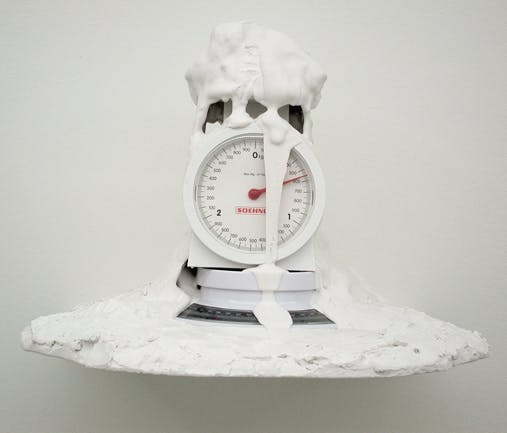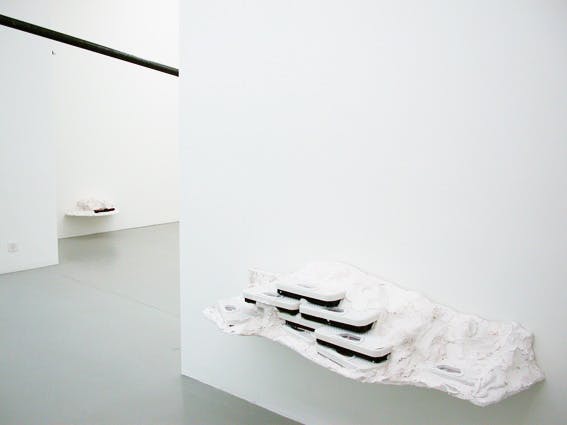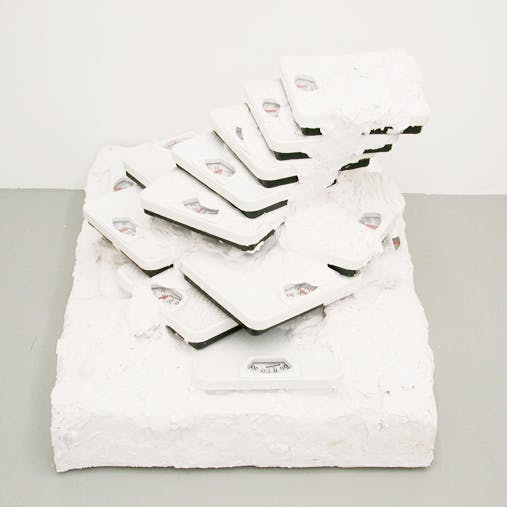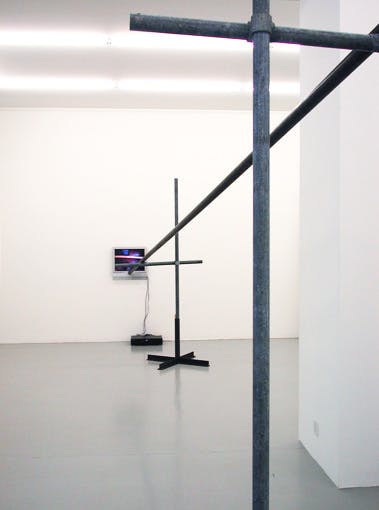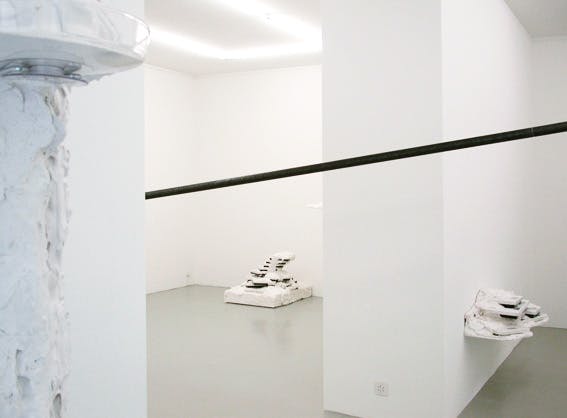We are pleased to be able to present in our gallery spaces a new group of works by the Swiss artist Christoph Rütimann (b. 1955 in Zurich, lives in Müllheim/TG). Alongside “Handlauf Rämistrasse”, made for this exhibition, several works from the new series “Weight in Plaster” can be seen. Christoph Rütimann represented Switzerland at the Venice Biennale in 1993. Numerous exhibitions have been dedicated to him, including Stichting de Appel, Amsterdam in 1991, Westfälischer Kunstverein Muenster in 1995, Kunsthalle Bern in 1999, Kunstmuseum Luzern and Kunsthaus Aarau in 2002. In 2005 he received the International Art Prize of the Land Vorarlberg.
A metal tube runs straight through the gallery spaces, two flat screens on both its ends. As if through two windows in the wall they show a camera journey on a similar tube. In short sequences the camera traverses the building of the Rämistrasse in both directions. The journey upwards ends in the Giacometti rooms of the Kunsthaus, the journey downwards in the Kronenhalle. The film is simultaneously the unwinding of the path covered on the tube. The architecture gives it the dimensions and rhythm. In the installation in the gallery spaces the course of the video journeys traverses itself. The special perspective determined by the artist’s hand guiding the camera causes a shift in ones gaze. Equally, however, the observer’s gaze is focused by the tube and the ensuing perspective since it delivers an unavoidable orientation point. This is echoed in the way the work is structured. Just as the two screens appear to reflect each other on the ends of the tubes, so the video sequences mirror the spatial situation in the gallery, continuing them with other means. The metal tube marks out an imaginary line that passes as it were through all the walls. It forms the necessary precondition for the camera image, as it seems to directly generate the video. The forcefulness with which the tube leads the gaze through the traversed rooms thereby opens the gaze to as great an extent for the spaces of the imagination. The play between imagination and reality – and, more precisely, the point of change at which both modalities meet and for a moment can no longer be precisely distinguished also occurs in the new series “Weight in Plaster”. The scales enclosed in plaster develop an eminent sculptural effect. Their aesthetic appearance is set by the material of the plaster that through its whiteness and neutrality has in the history of sculpture since the late 18th century been aiming for pure form. In their strict formality they bring the process-based nature of visual perception into consciousness. At the same time however a purely aesthetic reception of the sculptures is counteracted by the concrete object-ness of the enclosed scales. Their dials remain legible, they retain the point of their own stiffening during the hardening process of the plaster. Indeed they offer no form of opening on the weight bearing down on them. In this way the weight indicator can fall quite easily in the minus area of the dial. The scales lose their original function of presenting and making visible gravity. No one will be able to contest the reality of the phenomenon shown here: the description of weight now follows its own logic.






